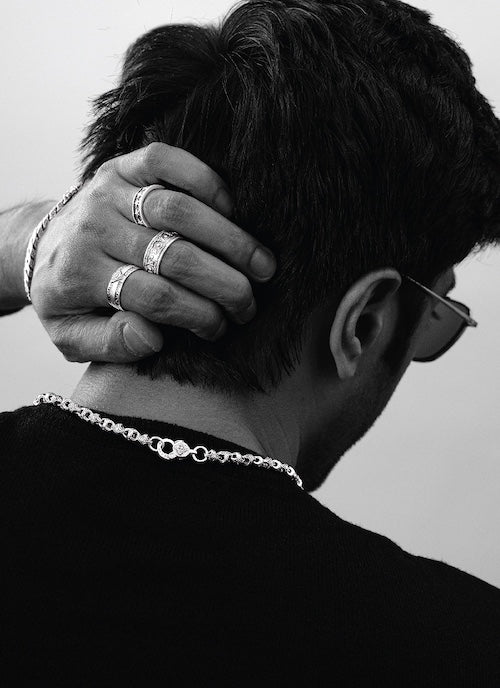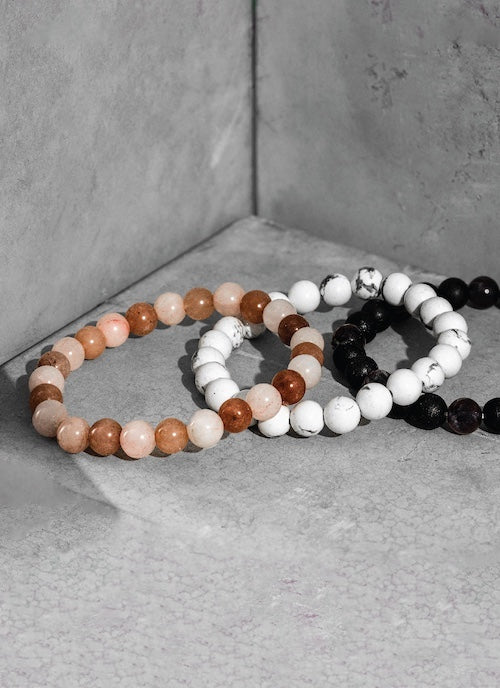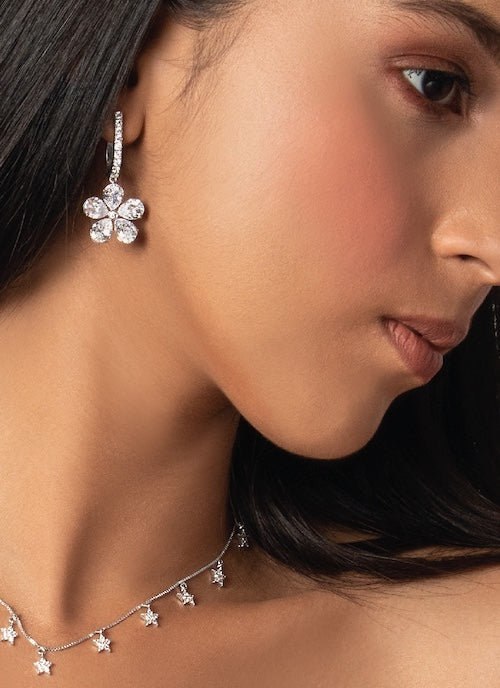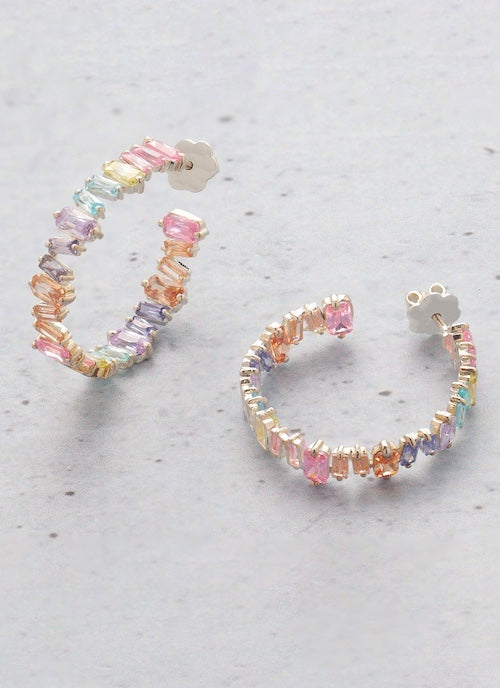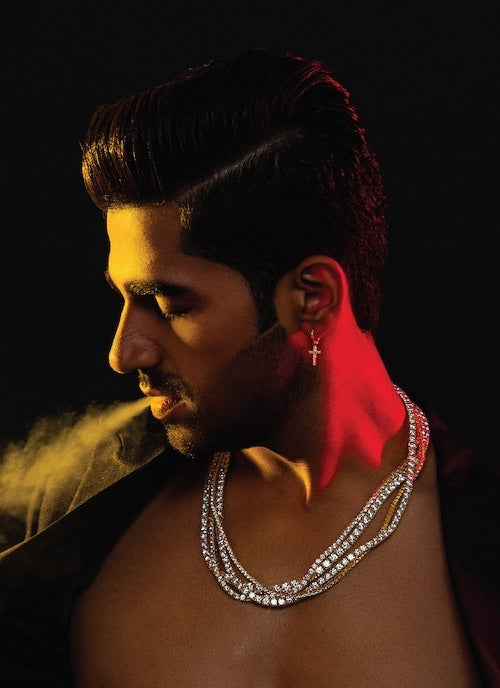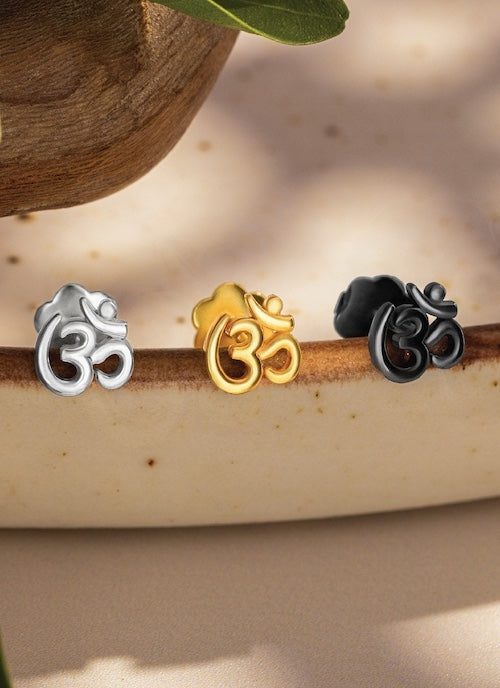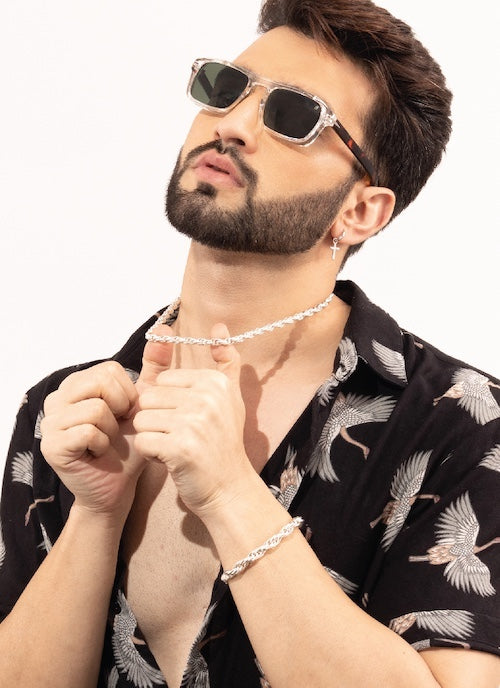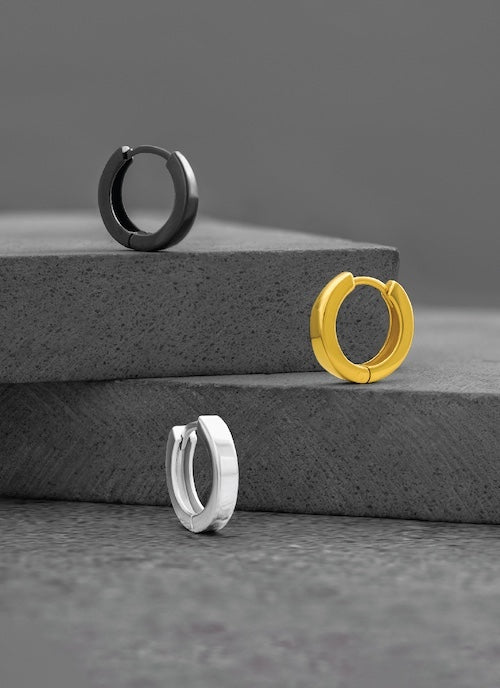Introduction: Why Sizing Men’s Cuff Bracelets Matters More Than You Think
Choosing the right size men's cuff bracelets may seem like a simple decision at first glance, but once you begin exploring the subtle mechanics of fit, comfort, proportion and personal expression, you realise that the size of a bracelet influences far more than just whether it slips onto your wrist. The fit of a cuff bracelet affects how freely your wrist moves, how confidently you carry your style, and even how harmonious your overall outfit appears. A cuff bracelet that is too tight can feel restrictive, pinch the skin, and make the wrist appear bulkier than normal. On the other hand, a cuff bracelet that is too loose not only breaks the look of an outfit but also risks slipping off entirely. Sizing, therefore, becomes an essential part of the jewellery selection process, particularly for men who prefer understated accessories that blend seamlessly into their everyday wardrobe.
A well fitting cuff bracelet balances structure with comfort, strength with subtlety, and elegance with masculinity. This makes sizing a crucial skill, not only for seasoned jewellery enthusiasts but also for men buying their very first bracelet. Many men hesitate to experiment with bracelets because they fear they might look odd or oversized. That hesitation comes from experiencing or imagining a poorly sized bracelet. When chosen correctly, however, men's cuff bracelets can enhance the wrist, complement the outfit, and feel like a natural extension of one’s personal style. The right size follows the curve of the wrist, sitting in place without shifting too much, while still offering freedom of movement.
Sizing also becomes particularly important because cuff bracelets do not rely on traditional clasps. Their open ended form means they should naturally hug the wrist without requiring closure mechanisms. This opens up a conversation about width, thickness, circumference, flexibility, and metal strength. Some cuffs have softer, malleable structures that allow for slight adjustments, while others have a rigid build designed to keep their shape. Understanding how this affects sizing is crucial. For example, a rigid cuff requires a nearly perfect fit, whereas a flexible one can accommodate slight variations. The wearer must consider wrist shape just as much as wrist size. Some men have flatter wrists, others rounder, and cuff bracelets sit differently depending on these structures.
In addition to the practical aspects of fit, sizing also ties directly into aesthetics. A slim, minimal cuff offers sophistication and subtle charm, often working best when proportionate to slender wrists. A wider, bolder cuff bracelet may look powerful and statement driven, but only if its size complements the wearer’s natural frame. Too wide and it overwhelms the hand; too narrow and it can disappear against a broad wrist. The right size brings balance, and balance brings confidence.
Moreover, the choice of size influences the type of outfits the bracelet pairs well with. A sleek, well sized cuff can work seamlessly in both formal and casual environments. A mis sized one can suddenly feel out of place, especially in work settings where minimalism and refinement are expected. The modern man values versatility, and the versatility of a cuff bracelet depends heavily on how well it fits.
This guide unpacks every essential detail, from measuring your wrist correctly to understanding how thickness affects comfort to decoding how width affects style. Whether you are purchasing men's cuff bracelets for the first time or expanding an existing jewellery collection, this complete sizing guide ensures that your cuff bracelet enhances your style with perfect precision.
Understanding the Basics of Men's Cuff Bracelets Sizes
Sizing men's cuff bracelets begins with understanding how bracelet dimensions work. The three major dimensions you must pay attention to are inner circumference, width, and thickness. Inner circumference determines how snugly the bracelet fits around your wrist. Width influences style, making a bracelet either minimal or statement oriented. Thickness affects durability and wearing comfort.
Before exploring these attributes in detail, it is essential to acknowledge that cuff bracelets rely on structure rather than clasps. This means they should be measured and worn differently compared to linked or beaded bracelets. Since cuff bracelets are typically oval shaped rather than circular, their inner circumference should follow the natural shape of the wrist to prevent discomfort.
Key Attributes to Consider
Below is an overview of what sizing involves, before diving deeper into the technical aspects.
-
Inner Circumference
The total length of the inside measurement of the bracelet when laid flat. This controls how tight or loose the bracelet feels on the wrist. It must be chosen carefully because cuffs cannot rely on clasps for adjustment. -
Wrist Shape
Flat, round, or tapered wrist shapes can change how a cuff sits. This becomes more noticeable for wider designs. -
Cuff Opening
The gap between the ends of the cuff affects how easily you can slide the bracelet onto your wrist. Ideally, the gap should not exceed 1 inch for stability. -
Width
Narrow cuffs offer minimalism, while wider ones create bold statements. Width must complement the wrist size for proper proportion. -
Thickness and Material Strength
Thicker materials such as dense metal allow the cuff to keep shape but reduce flexibility. Thinner cuffs offer more bending tolerance but must be handled with care.
Understanding these basics helps you recognise why cuff sizing requires more attention than traditional bracelet sizing.
How to Measure Your Wrist for Men's Cuff Bracelets
Before choosing the right size, it is crucial to measure your wrist accurately. This measurement serves as the foundation for selecting properly fitting men's cuff bracelets, ensuring neither discomfort nor slippage. The process is simple, effective, and easy to perform at home.
Step by Step Wrist Measurement Guide
1. Use a Soft Measuring Tape
Wrap the tape around the narrowest part of your wrist. Do not pull the tape too tightly; it should rest comfortably against the skin. Note the exact measurement.
2. If You Do Not Have a Measuring Tape
Use a strip of paper or string. Wrap it around your wrist, mark the point where it meets, then measure the strip with a ruler.
3. Add an Allowance for Cuff Structure
Since cuff bracelets do not fully close, you must add tolerance to your wrist measurement. For most men, adding 0.25 to 0.5 inches achieves a comfortable fit. This small allowance compensates for the cuff opening and ensures natural movement without looseness.
4. Consider Wrist Shape
If you have a flat wrist, sizing tolerance should be slightly higher. For round wrists, standard allowances work well.
5. Test the Fit Using a Similar Object
If you own any existing cuff bracelets or rigid bangles, try comparing their fit with your measurement. This helps visualise how tight or loose the new cuff bracelet may feel.
Recommended Sizes for Men's Cuff Bracelets
| Wrist Circumference | Recommended Cuff Size | Fit Description |
|---|---|---|
| 5.5 to 6.0 inches | 6.25 to 6.5 inches | Snug fit for narrow wrists without restricting natural movement |
| 6.0 to 6.5 inches | 6.75 to 7.0 inches | Balanced fit offering comfort and security |
| 6.5 to 7.0 inches | 7.25 to 7.5 inches | Comfortable fit ideal for average wrist sizes |
| 7.0 to 7.5 inches | 7.75 to 8.0 inches | Relaxed fit suited for broader wrists |
| 7.5 to 8.0 inches | 8.25 to 8.5 inches | Secure fit that does not slide excessively |
How the Width of Men's Cuff Bracelets Affects Sizing
The width of a cuff bracelet plays a critical role in both fit and aesthetics. Men with slender wrists often prefer slimmer profiles because they offer proportional elegance. Wider cuffs create bold statements and work best for men with naturally broader wrists.
Understanding Width Choices
-
Slim Cuff Bracelets (4 to 6 mm width)
Best suited for minimalists. These sit lightly on the wrist and are comfortable for long term wear. They pair well with watches and do not overwhelm formal outfits. -
Medium Width Cuff Bracelets (7 to 10 mm width)
The most versatile category. These cuffs strike a balance between subtlety and presence. They can be worn with casual, semi formal, and formal outfits. -
Wide Cuff Bracelets (11 to 18 mm width)
These are statement pieces. They draw attention immediately and work well for fashion forward men who are confident in bold accessories.
Proportion Matters
For the most flattering look, ensure the cuff width aligns with wrist proportions. A small wrist wearing a wide cuff may appear overwhelmed, while a large wrist wearing a slim cuff may appear unbalanced.
The Role of Thickness in Choosing Men's Cuff Bracelets
Thickness subtly influences comfort, weight, and styling potential. Thicker cuffs feel more substantial, while thinner ones offer agility.
Three Thickness Categories
-
Thin Cuff Bracelets (1 to 2 mm thickness)
Lightweight, easy to adjust, but may bend if not handled carefully. -
Medium Thickness (2 to 4 mm thickness)
The ideal balance for most men. These offer durability while remaining comfortable for daily wear. -
Thick Cuff Bracelets (5 mm and above)
Heavy, substantial, and ultra robust. Best for men who like strong, masculine jewellery aesthetics.
Choosing the Right Width and Thickness for Men's Cuff Bracelets
| Bracelet Width | Ideal Wrist Type | Recommended Thickness | Style Effect |
|---|---|---|---|
| 4 to 6 mm | Slender or medium wrists | 1 to 2 mm | Minimalist, elegant, blends with formal outfits |
| 7 to 10 mm | All wrist types | 2 to 4 mm | Balanced, versatile, suitable for everyday wear |
| 11 to 18 mm | Medium to broad wrists | 4 to 6 mm | Bold, statement oriented, best for fashion forward looks |
How Tight or Loose Should Men's Cuff Bracelets Fit?
To achieve an ideal fit, aim for a cuff bracelet that sits comfortably without rotating excessively. A properly sized cuff bracelet should:
- Sit just above the wrist bone
- Move slightly but not slide to the forearm
- Allow bending of the wrist without pinching
- Offer a secure grip without feeling tight
Key Fit Guidelines
- If it rotates completely: It is too loose
- If it leaves deep marks: It is too tight
- If you cannot slide two fingers beneath it: It needs a larger inner circumference
- If it slips off: Reduce the cuff opening
A well sized cuff bracelet stays in place during daily activities while allowing the wearer to forget it’s even there.
How to Style Men's Cuff Bracelets for Different Outfits
Styling becomes much easier once you choose the right size, because a well fitting cuff bracelet complements a variety of looks.
Formal Outfits
For office attire or formal events, polished medium width cuff bracelets offer refinement. They pair quietly with blazers, shirts, and tailored trousers without drawing excessive attention.
Casual Outfits
Slim or medium cuffs offer effortless casual styling. They work well with T shirts, denim, linen shirts, or even streetwear inspired outfits.
Evening Looks
Wide or statement cuffs suit evening engagements, complementing monochrome outfits, jackets, or layered looks.
Frequently Asked Questions About Men's Cuff Bracelets
1. How do I know if my men's cuff bracelets fit correctly?
A properly fitting cuff should feel secure without creating pressure. It must stay just above the wrist bone and allow comfortable movement without rotating freely. If you feel pinching when bending your wrist or if the bracelet leaves deep marks, the size is incorrect. Many men mistakenly choose loose cuffs, which slip or look awkward, so aim for a balanced, comfortable fit.
2. Can men's cuff bracelets be adjusted after purchase?
Some cuff bracelets can be slightly adjusted depending on the material. Softer metals allow for gentle opening or tightening, while rigid metals should not be bent repeatedly as this can cause cracking. If you require adjustment, it is best to do so once and avoid constant reshaping to preserve the bracelet’s structure.
3. What is the best width for men's cuff bracelets?
The ideal width depends on your wrist shape and style preference. Slim cuffs work best for minimalists and formal outfits. Medium widths offer versatility across all wardrobe styles. Wide cuffs suit men who appreciate bold accessories. Proportion is key; match the width to wrist size for a flattering look.
4. How should I measure the cuff opening?
The opening should generally measure between 0.75 to 1 inch. This allows the bracelet to slide onto the wrist comfortably without slipping off. Larger openings compromise stability, while smaller ones may make wearing and removing the bracelet difficult.
5. Are men's cuff bracelets comfortable for daily wear?
Yes, as long as the bracelet fits correctly. A well sized cuff bracelet becomes almost unnoticeable during the day. Avoid cuffs that are too thick or too heavy if you plan to wear them for long hours. The right material and width ensure comfort.
6. Should men wear cuff bracelets on the left or right hand?
There is no fixed rule. Many men prefer wearing bracelets on their non dominant wrist to reduce interference during tasks. Others choose the wrist that visually balances jewellery like watches. Style, comfort, and habit should guide your choice.
7. Do cuff bracelets suit all men?
Absolutely. Cuff bracelets complement every style as long as sizing and proportion are correct. Men with slim wrists look great in narrow cuffs, while broader wrists handle medium and wide widths beautifully. A well chosen cuff enhances masculine style effortlessly.
8. How do I care for my cuff bracelet?
Regular cleaning with a soft cloth keeps the bracelet free from oils and dust. Avoid exposure to harsh chemicals and store it in a fabric pouch to reduce scratches. If the bracelet is made from a reactive metal, occasional polishing maintains its shine.
9. Can I stack multiple men's cuff bracelets?
Yes, but ensure they fit properly before stacking. Pair narrow cuffs for a subtle look or combine a medium cuff with slim bangles for layered style. Avoid stacking wide cuffs together as this may feel uncomfortable or visually overwhelming.
10. What material is best for men's cuff bracelets?
Material choice depends on personal preference, skin sensitivity, and desired aesthetic. Stainless steel cuffs offer durability, silver cuffs provide elegance, and brass or copper cuffs offer unique tones. Thicker metals retain shape better, while thinner metals provide flexibility.
Conclusion: Achieving the Perfect Fit for Men's Cuff Bracelets
Choosing the right size for men's cuff bracelets is not just about measuring your wrist; it is about understanding your personal comfort, recognising your wrist proportions, and selecting a bracelet that aligns with your individual style. The right size helps the bracelet sit naturally on your wrist, enhancing your outfit and adding subtle presence without drawing unnecessary attention. A cuff bracelet should neither squeeze nor slide. Instead, it should feel like a natural extension of your personal style.
A properly sized cuff bracelet also ensures long term wearability. Whether you choose a slim, medium, or wide profile, the right fit allows you to wear your bracelet with confidence through daily activities. Comfort should always be your first consideration. Style follows effortlessly when the bracelet sits correctly. For many men, this becomes the foundation of their bracelet collection, as a single well fitted cuff can complement multiple outfits and occasions.
The modern man understands that accessories are no longer optional additions but essential expressions of personality. Choosing the right size transforms your cuff bracelet into an investment piece. It highlights your wrist, balances your outfit, and contributes to a refined look across casual, formal, or evening ensembles. Whether you prefer minimalism or boldness, the perfect size brings harmony and sophistication to your accessories.
As jewellery trends continue to evolve, men increasingly appreciate the impact of well chosen accessories. A thoughtfully selected cuff bracelet reflects attention to detail, confidence, and personal authenticity. With the guidelines in this comprehensive sizing guide, you now possess the knowledge to choose a cuff bracelet that delivers the perfect balance of comfort, elegance, and style.
